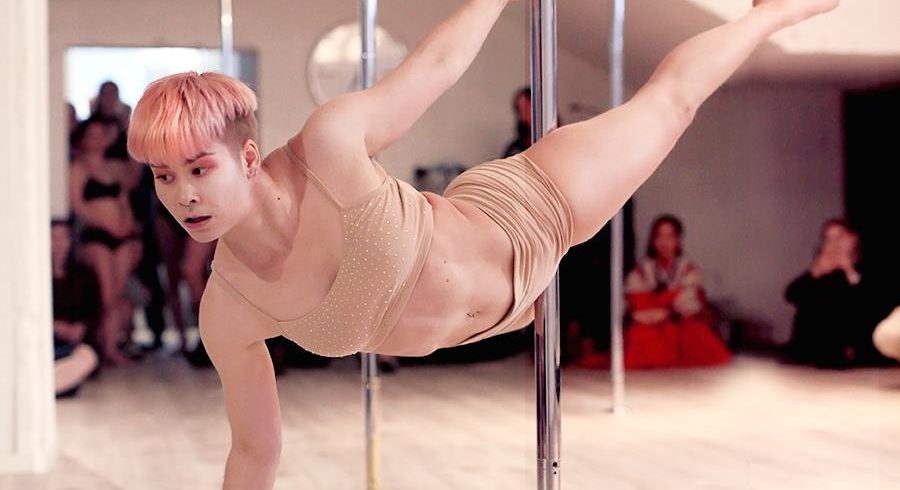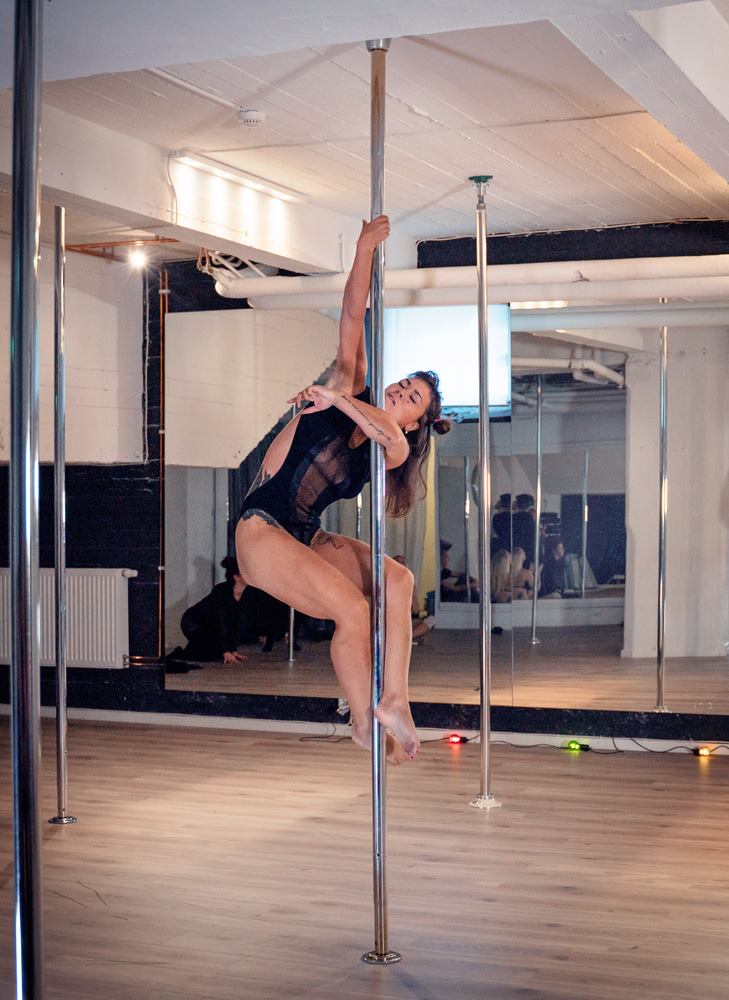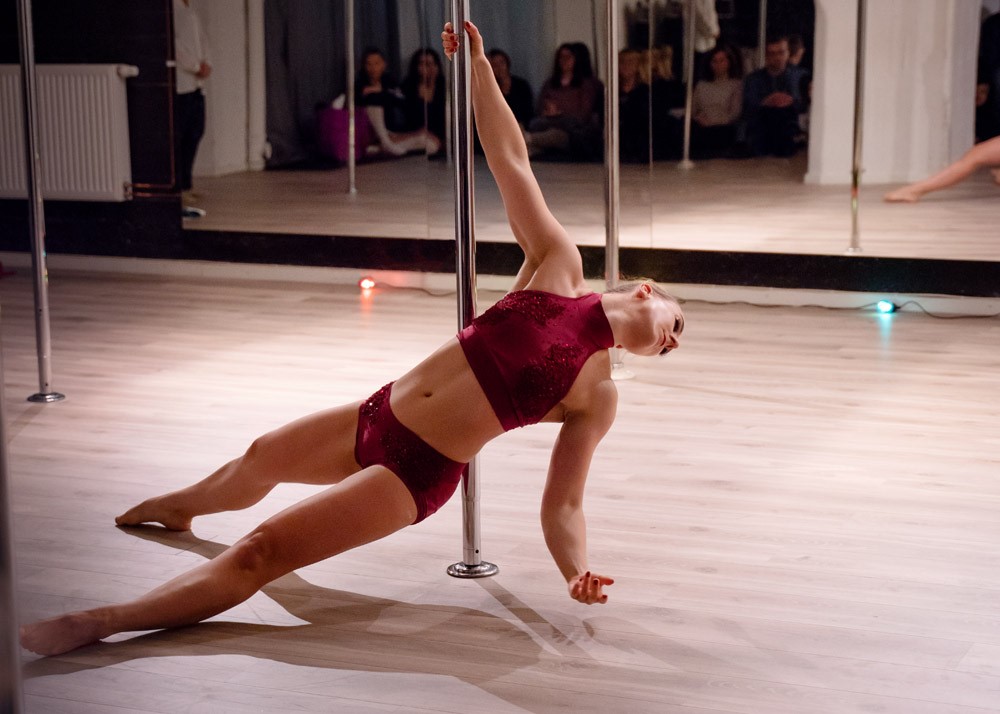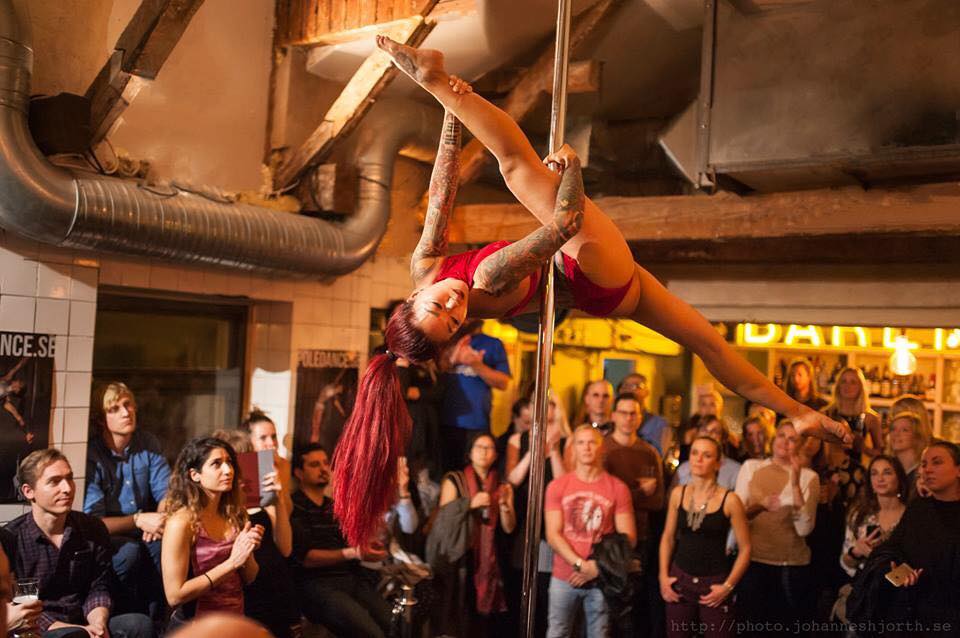
15 tips for your first choreo as a beginners… Part 2
7. Focus on transitions
Pole choreographies are not only about pole. They include floor work, freestanding moves, and tricks, elements where you are in contact with the pole using it as a tool, for example, body waves.
These and all the elements in between the different tricks on the pole are the transitions of your routine.
Transitions are where you include your pauses, your slow movements, and your expression as on the pole tricks. It is essential to keep them as smooth as possible without rushing through them. They need to blend into your routine! They can make such a big difference between a good choreo and a messy and unpolished one, despite most of the audience doesn’t even realize they are there!
Mastering transitions is one of the hardest skills to learn, and it requires a lot of effort and work! Dedicate time to refining and creatively choreographing your transitions, and your whole performance will improve!
When you work on your transitions, ask yourself if the movement has its purpose, if it is interesting and deliberate, or if you can make it invisible.
Think about your tricks. How do you place your hands? Do you need to move the hands to move into your next trick? Do you need to transfer your weight from one side to the other, from one foot to the other? Do you need to move from one side of the stage to the other? Do you need to start the spin in one specific direction?
Each movement needs its purpose but still keep in mind that some movements will feel more natural than others, so start from there 🙂

8. Play on your strengths
Your routine is entirely yours, you want to shine while performing it. To do that, focus on your strengths: if you are not very flexible, maybe avoid inserting a very splitty things, and focus on power .pins or flips, instead 🙂
9. Recording saves lives
OK, maybe this is exaggerate but never forget to record what you are doing. You want to know what looks good and what does not. And you want to save some of the ideas for later if they do not fit to your actual routine.
Try to record yourself from different angles, because it will help you to understand if any of the tricks you are performing looks better from an other angle than the one you are using.
You don’t have to show the material you recorded to anyone, unless you want to.

10. Write down your choreo
Recording your choreo is an essential tool, but it is not the only one to remember and review your routine.
Take a notebook and write down your moves matched to the lyrics or any other musical annotation. It will be easy to run through and to remember. Add also the corresponding time in the song, so that you can repeat parts of the choreo easier.
11. Get inspired
If you have very few ideas, watch pole videos from other polers. There may be something in their videos that you really like, and that you can include in your choreo! This can not really be considered copying since your whole performance will be different. No, this is not copying.
North Pole Studio YouTube channel is full of inspiring videos with choreographies showing all different levels of skills and kinds of music.
You can find inspirations also by looking to complexly different pieces, including dance videos, ice skating performances, circus, even nature : 12. Get help from more experienced polers.
You are not really sure your piece looks on point, or you have ideas but you don’t know how to express them? Asking for help from more experienced polers is always possible. At North Pole Studio, you can ask to have private with any of our instructors. They are all experienced polers with several shows and competitions on their journey.
Contact us to have more information or book a private here 🙂

13. Be Okay with Change
If something isn’t working in your routine, either because it is too hard or you don’t like how it fits anymore, it just means that move isn’t right for the routine.
It’s essential to understand it and be okay with moving onto a different trick or transition that might fit better. Don’t force it, and you’ll be happier to not performing it into your routine.
14. Remember your limbs
Hands, toes and head are very important to make your choreography nice and polished.
Do something with your hands, try to have them relaxed and slightly flex. Use your arm and your head to accentuate your movements and lines. And please, point your toes when you are on the pole!
15. Costumes as finish touch
You have the theme, the music, the choreo is almost finished… time to think about your costume.
When competing, you have very rules to respect but in showcases, most of the time you can decide your own. Costumes, i.e. some parts of them at least, can be used as props on stage as well.
Skirts, shirts, sweatshirts, socks, can all be beautiful props one can keep or removes during the performance to give more personality or enhance the theme.
Looking for something easy? Just pick a simple outfit you use for your everyday pole and embellish it with crystals or covering it with glittery cloths. It require a bit of sawing technique but it can be very fun.
Is it a big event and you don’t feel confident in going for DYO? Talk with a professional that can help you with that 🙂
We hope that this brief guide will help you prepare your next choreography. If you are looking for more inspiration check North Pole Studio YouTube channel.
P.S. Get ready for two awesome challenges coming in the next few weeks. More details to come!
P.P.S. If you want to know more about North Pole Studio, and be always updated with our events and classes, follow us on Instagram and Facebook or register for our newsletter! We will weekly publish our open pole time and schedule there, as well as all the info for our summer challenges.

